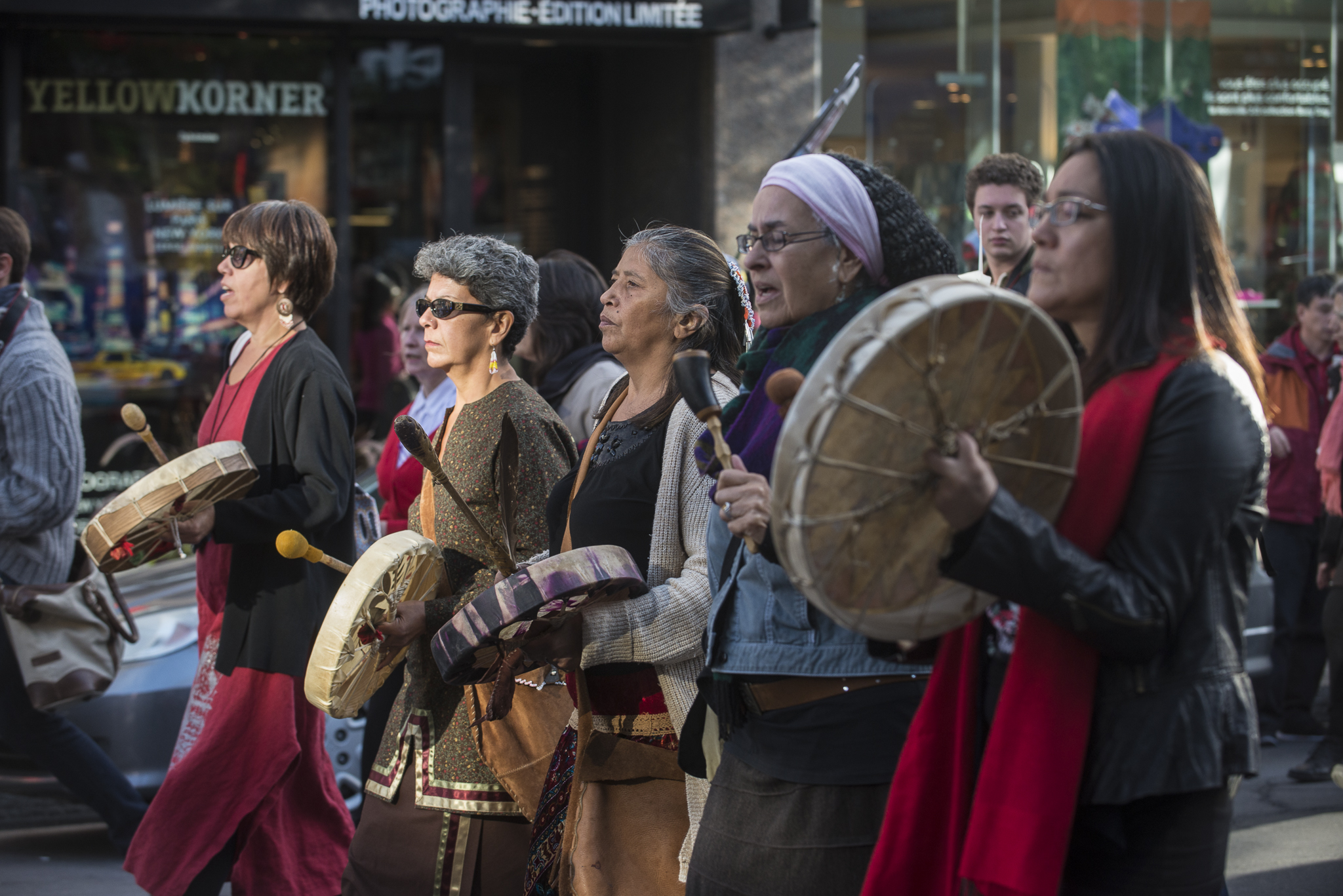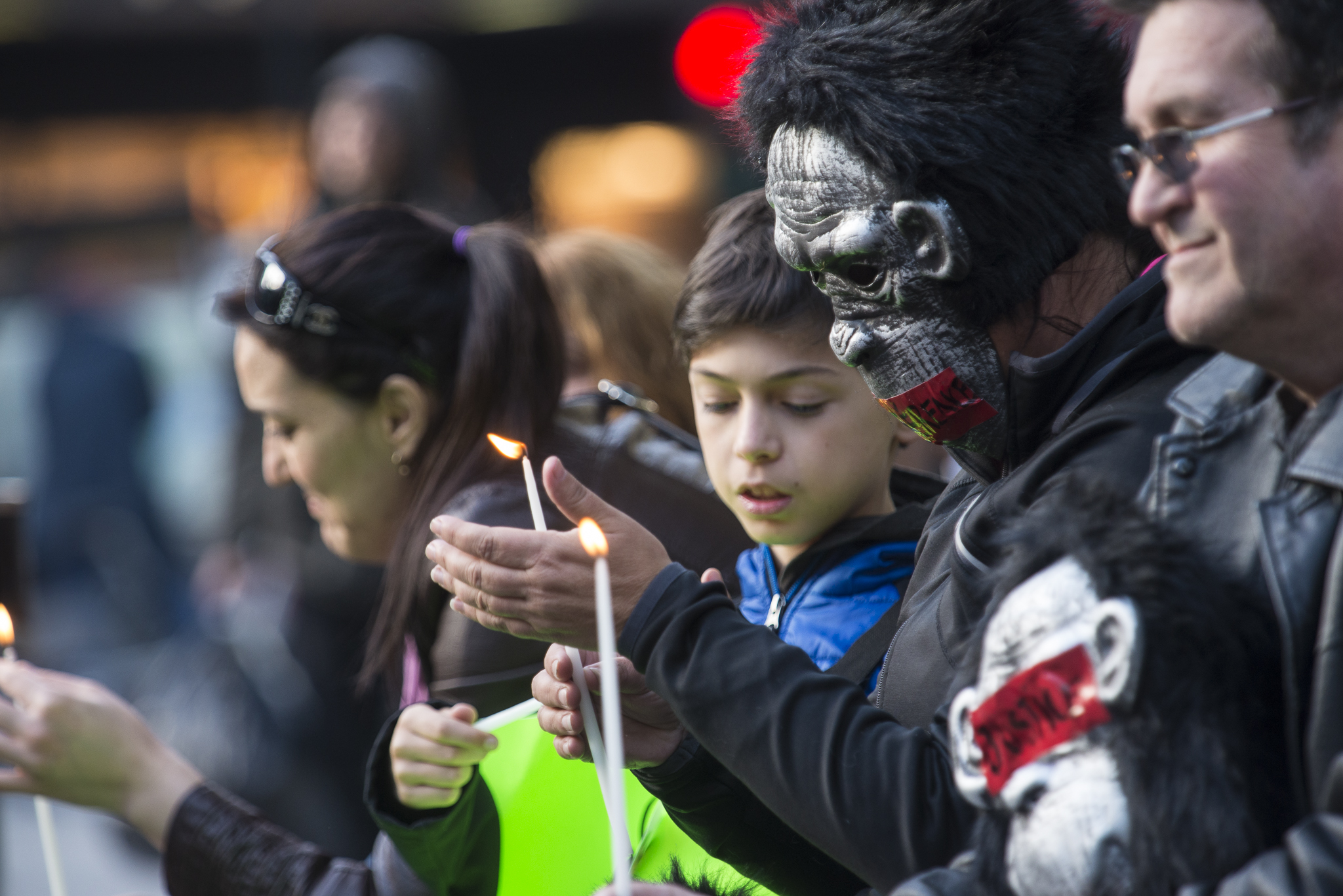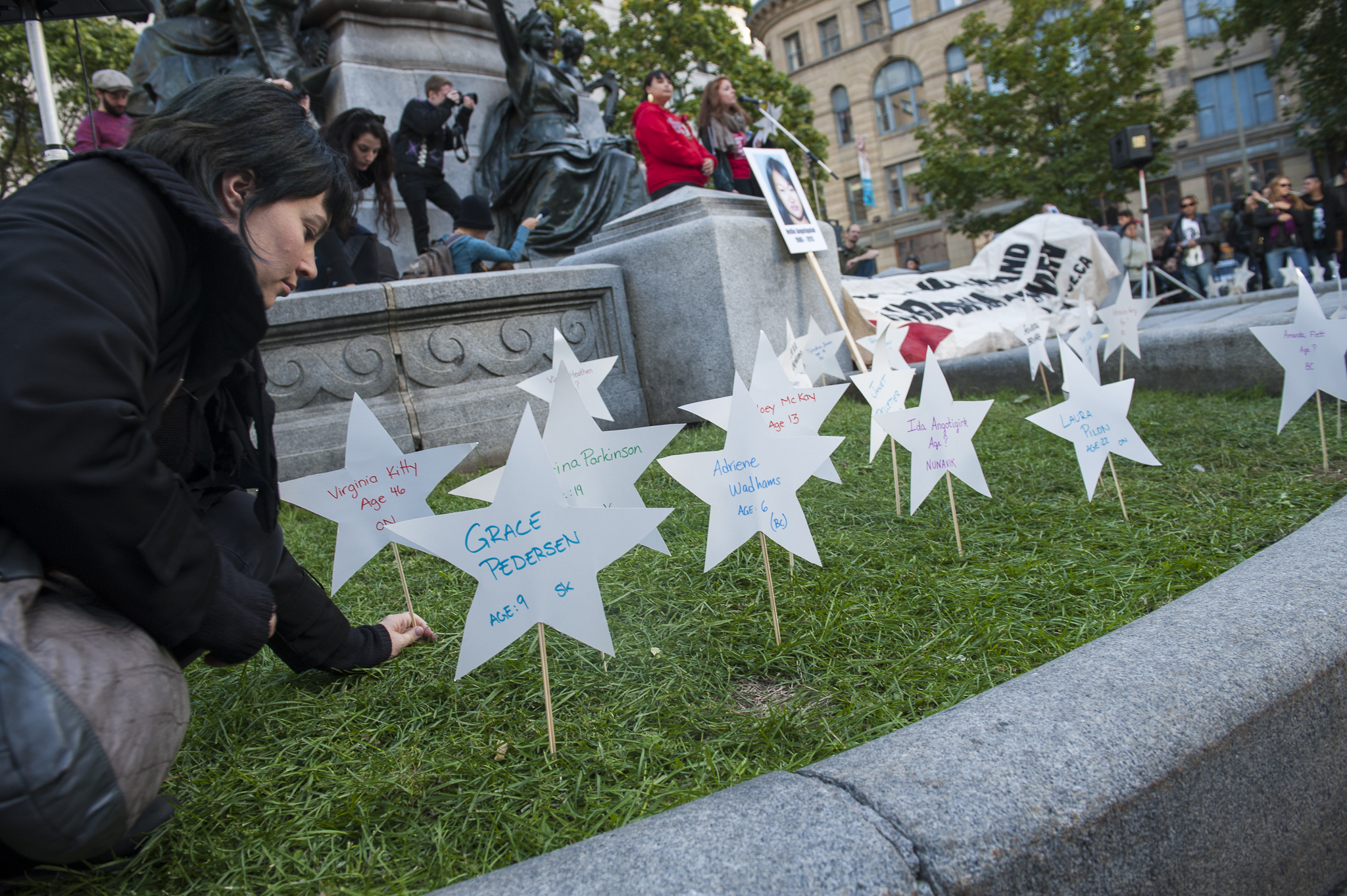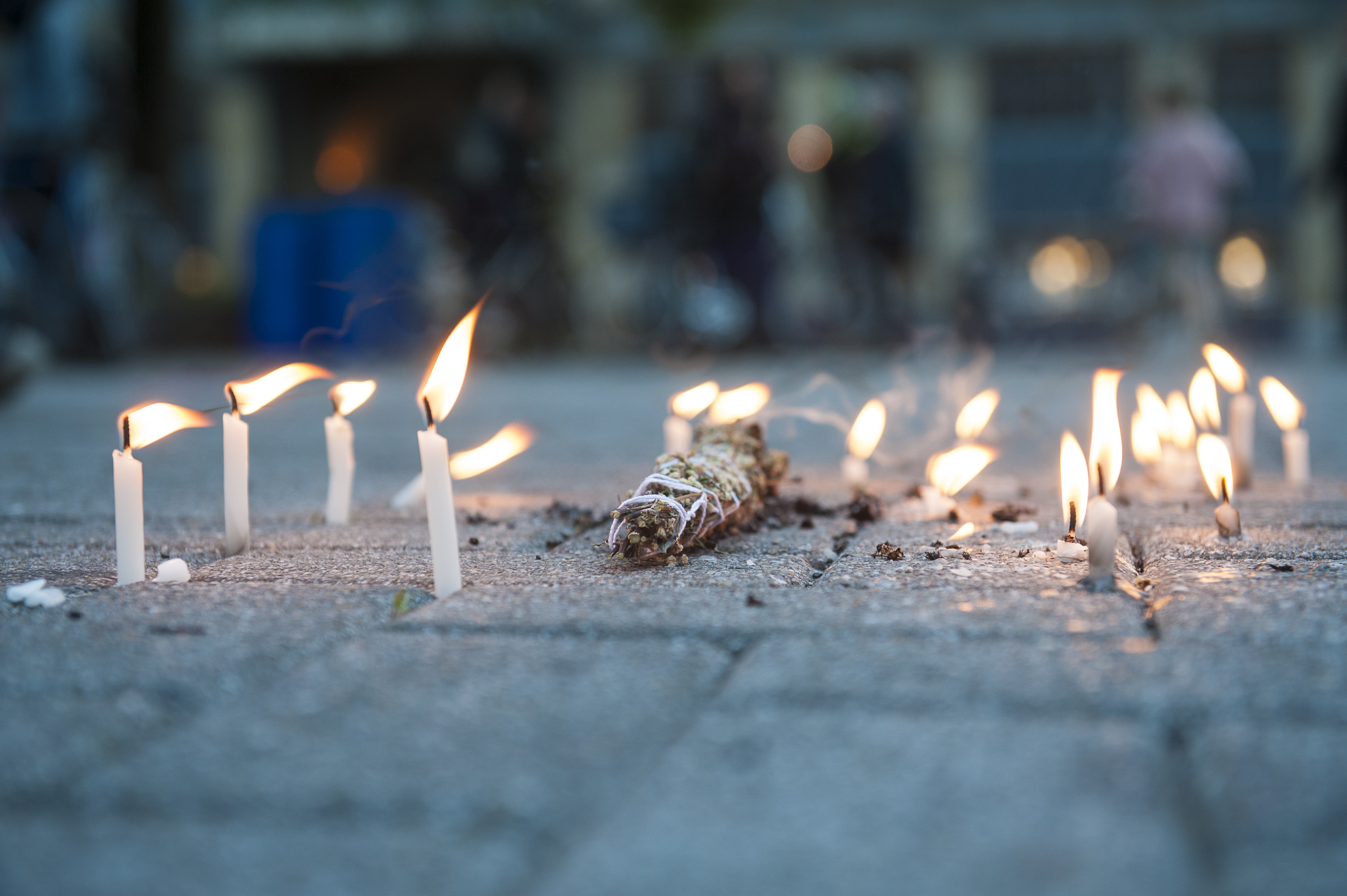Hundreds attended the march and vigil for murdered and missing women
“At the beginning of time, everything on Earth was given a responsibility. And everything on Earth still honours that responsibility—except us, the human beings. And at the beginning of time, the responsibility we were given was to love one another, to honour and respect all of creation, and to say thank you.”

Mohawk elder Sedalia Kawennotas Fazio opened the 10th annual march and vigil for missing and murdered native women on Sunday, speaking to the hundreds of people gathered at Cabot Square. The march, hosted by Missing Justice, Quebec Native Women and the Centre for Gender Advocacy, was held in honour of missing and murdered women and girls.
“On this beautiful day where we honour all of these beautiful sisters and daughters, mothers, grandmothers and aunts, we pray for them,” said Fazio. “For those we cannot find, we pray we will one day see them again. And for those who have passed on, we leave to Creator.”

The RCMP reported last year that over 1,000 aboriginal women were homicide victims between 1980 and 2012, and a further 164 were missing. Some activists say that the actual numbers are much higher.
Fazio performed a healing song to the crowd before other speakers and activists took to the microphone. Nakuset, executive director of the Native Women’s Shelter of Montreal, talked about her work to create a better relationship between Aboriginal people and the police.
“What we want to do is soon hire an Aboriginal person that would be the go-to person—so if someone is missing in Montreal, they would call this person … and then they would call all of the community organizations and the hospitals, and they would call the families … and create a file and bring it to the police,” she said.

The crowd marched east on Ste-Catherine St. to Phillips Square where the vigil was held. Candles were lit and paper stars with the names of missing and murdered native women were placed into the grass. There were performances by the powwow singing group Buffalo Hat Singers and dancing by Barbara Diabo.
Fazio returned to bring the vigil to its close with a song and a prayer.
“Let us pray … as one people, that we can gather here again next year—but not to beg to be recognized, but to celebrate that they are finally honouring our women that are lost, our women that are murdered,” she said. “Let us celebrate one year from today instead of standing up here with the powers that be to recognize us as human beings and as the first peoples of these lands.”

Fazio also called out the Harper’s Conservative government—a topic mentioned by several speakers throughout the day.
“We need this government changed,” she said. “We need a government who is going to recognize us. We need a government who will finally put us where we belong as the first peoples of these lands. We are not second-class citizens.”



